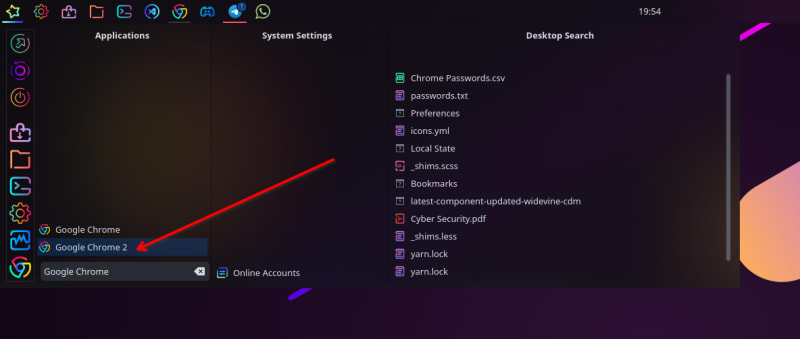If you run KDE Neon plasma, you may have observed that using several instances of Google Chrome with the same user in KDE activity or virtual desktop is a little challenging.
Chrome will always return you to the previous virtual desktop or activity if you open it on a different virtual desktop or activity.
This can be really bothersome, especially if you wish to operate two or more Chrome windows independently and don't want to constantly open and dismiss tabs.
In this article, I'll show you how to avoid that problem and use your profile when using various Google Chrome windows with various tabs. So let's start.
Step 1
Open your terminal and type in cd to switch to the home directory if you are not there already. In your home directory, you should have a Desktop directory. You can hit ls to confirm that.
Open your terminal and type cd to get to get in the home directory if you are not already there. You ought to have a Desktop directory in your home directory. To confirm that, type 'ls' and hit enter.
jazzdev@kde-neon:~$ ls
Desktop Documents Downloads jazzdev Pictures snap Videos
jazzdev@kde-neon:~$
Step 2
cd Desktop will take you to your Desktop directory.
Step 3
Create a new file using any editor of your choosing, give it the name chrome-2.desktop. I'll use vim chrome-2.desktop because I like vim.
Step 4
Copy the code bellow into the file you just created.
[Desktop Entry]
Version=1.0
Name=Google Chrome 2
GenericName=Web Browser
Comment=Access the Internet
Exec=google-chrome --user-data-dir=/home/jazzdev/.chrome2 %U
Terminal=false
Icon=google-chrome
Type=Application
Categories=Network;WebBrowser;
MimeType=text/html;text/xml;application/xhtml_xml;x-scheme-handler/http;x-scheme-handler/https;
Edit the line Exec=google-chrome --user-data-dir=/home/jazzdev/.chrome2 %U and replace jazzdev to your pc name then save and exit.
If you are using vim, press i key on your keyboard to enter the INSERT MODE. This will enable you to edit the code you just pasted.
Once you are done editing, and press Esc key to exit the insert mode and type :x and press enter on your keyboard to save and exit.
Step 5
If everything goes as planned, the file you just produced should appear on your desktop.
Step 6
Back in your terminal, make sure you are still in the /Desktop dir.
To make the newly created chrome-2.desktop file globally accessible on your computer when you search for it, move it to the applications folder. Don't worry, the application folder should already exist.
mv chrome-2.desktop ~/.local/share/applications/
If a new line appears, the file has been properly relocated.
Step 7
We can now use our brand-new Chrome instance. Search for Google Chrome on your desktop. As you can see, the application menu now includes Google Chrome 2.
The same profile that you use for your primary Google Chrome can now be used for several virtual desktops or activities in Google Chrome 2.
If you find this article interesting. You can leave me a remark. If you run into any problems along the road, be sure to leave a comment, and I'll be happy to assist you. Thanks.




Top comments (2)
Wow, thanks for this now I can run multiple Google chrome, this has helped me in solving that issue
Hi @casihenry
I'm glad you like the article and you found it helpful.